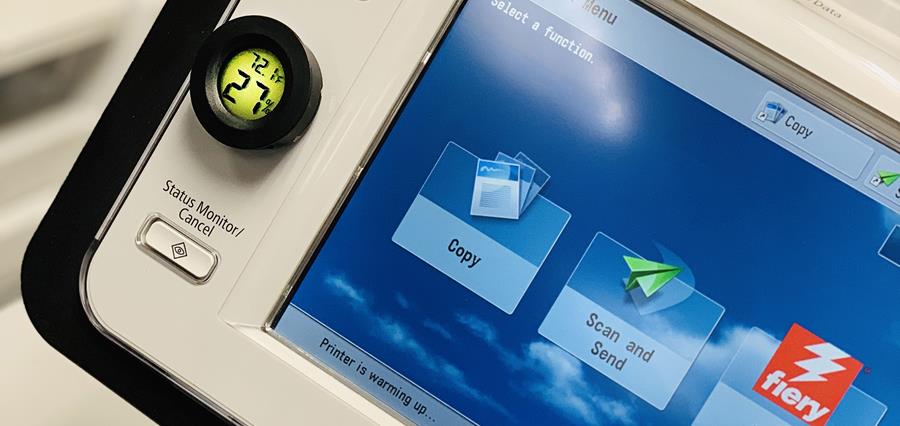Hygrometer. Most of you reading this newsletter have one. But you may not have been familiar with the technical name of a Humidity and Temperature Gauge instrument.
What’s more, you may not be familiar with the impact relative humidity and temperature have on your digital print engine. So it may come as a surprise that relative humidity is the one factor that has the greatest impact on your color consistency. The combination of temperature and relative humidity outside of ideal parameters can also wreak havoc on your media stocks.
To any of you who have attended one of our CampFiery workshops, you may remember the section of the lecture when I quoted “ideal” numbers for your operating climate. Relative humidity should have a readout of 30% to 60%. That’s not to say you can’t operate otherwise—but you might experience adverse effects when that number dips below 20% or rises above a 65% readout.
Combine that with a temperature that’s below 60 degrees or above 75 degrees, and you’re likely to experience misfeeds and color corrections more frequently than you’d like to deal with. The more your relative humidity is out of specifications, the more likely it is that you’re going to need to linearize and calibrate your engine to meet your color requirements or reduce color drift.
What can you do to avoid this mess in the first place? First, acquire a hygrometer. They’re cheap. Accurate hygrometers are about $12.00 online at Amazon.
If you set up a hygrometer and experience unsatisfactory readings, what’s next (other than moving the equipment)?
For one, monitor and create a schedule for your thermostat to stabilize the temperature as close to 68-70 degrees as possible. Keep in mind that the engine will generate plenty of heat on a daily basis.
Next, you may need to invest in a portable humidifier. We’ve had several customers do this—and it’s been a great help. Also, please try to keep doors or windows to the outside environment closed, especially in the summer and winter months. You’d be surprised what we see out there!
Finally, keep your media in its packaging until you plan to use it: try to avoid leaving loose paper out in the open. And if you store media in a different room than your printing equipment, try to bring it into the same room at least 24 hours before use. It’ll be a great help.
If you can manage your climate, you can expect to see better or at least more consistent results. And who knows? You may find you won’t need to calibrate as often.


Leave A Comment
You must be logged in to post a comment.